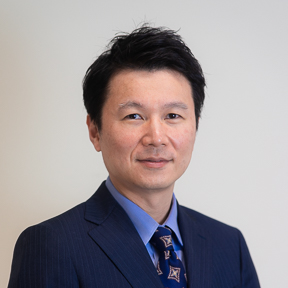
KAWAHARA Yoshihiro Professor
Hongo Campus
Graduate SchoolGraduate School of Engineering - Electrical Engineering and Information Systems
DepartmentDepartment of Information and Communication Engineering
Ubiquitous Information Environment Technology Field
Human interface and interaction
Artificial Intelligence (AI)
Deep Learning and Generative AI
Wireless Power Transfer
Internet of Things (IoT)
Control and Robotics
Wearable Devices
Green Transformation (GX)
Information network
Digital fabrication and wireless power transfer for Internet of Things
Looking ahead to the next era of the Internet of Things, we are working on AI-based digital fabrication technology, wireless power transfer technology, robotics, and sensing technology with the aim of realizing a world in which sensor and actuator functions are naturally integrated everywhere.
Research field 1
Aiming for technology that blends in with the environment and "lives" together with humans

Our goal is to realize a world in which artifacts blend into all environments and interact with the real world by connecting things, people, and nature, creating new value while coexisting independently with people. To realize this worldview, we are focusing on three research areas as fundamental technologies: energy for things to "live" autonomously, actuation for things to "move" in the real world, and fabrication for things to "create" in a sustainable manner. These three different areas work closely together to explore the possibilities of "what might be" in the future.
Research field 2
Wireless power transmission technology

Aiming to develop wireless power supply technology that does not require wired power supply or heavy batteries for mobile devices and sensors, we are researching wireless power transmission technology and applications that anyone can use safely, anywhere. We developed technologies that enable wireless power supply anywhere in a room using electromagnetic resonance coupling, and wearable systems that can supply power to mobile devices and biological sensors.
Research field 3
Digital fabrication technology

We are working on soft robots that are friendly to humans and harmonize with the environment, and digital manufacturing technologies to fabricate food, clothing, and shelter. The enabling technologies include 3D printing, circuit and sensor manufacturing using conductive ink. We are also engaged in research on three-dimensional manufacturing technology using origami and knitted fabrics, utilizing the knowledge of computer graphics.